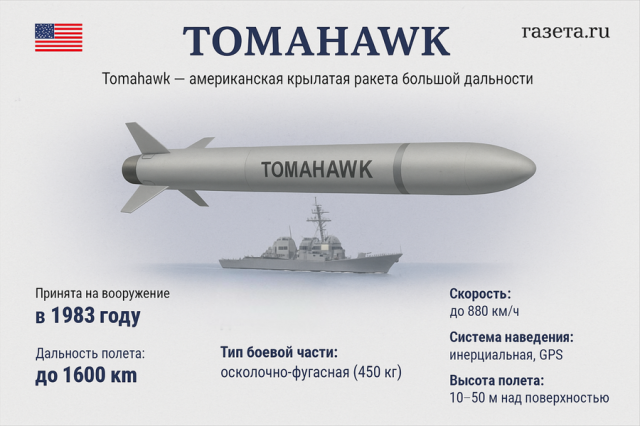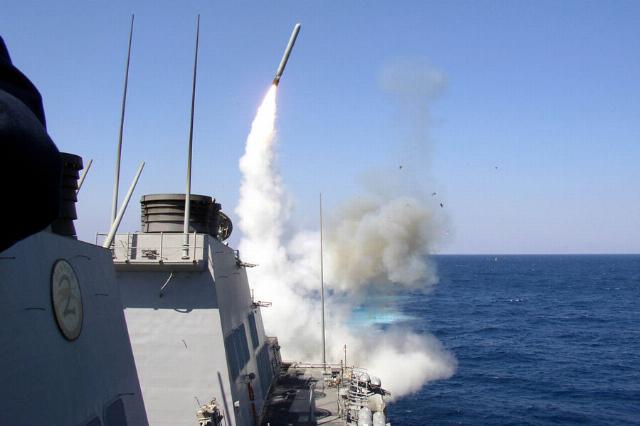US Special Representative Kellogg: Trump allowed Kiev to launch long-range strikes against Russia
The special representative of the US president, Keith Kellogg, said that Donald Trump allowed Ukraine to strike deep into the territory of Russia with long-range weapons. At the same time, the US authorities are discussing the possibility of supplying Tomahawk missiles to Ukraine. Russia is already analyzing statements about the possible supply of missiles to Kiev, the Kremlin said. How these missiles can change the situation in their own territory and how the Russian military can respond to the actions of the West - in the material of the military observer Gazeta.Ru", retired Colonel Mikhail Khodarenka.
The special Representative of the US president, Keith Kellogg, said that the head of the White House, Donald Trump, gave permission to the Armed Forces of Ukraine to use long-range weapons to attack targets deep in Russia. He noted that in Russia "there are no inviolable places."
"I think, taking into account what he said and what Vice President Vance and Secretary of State Rubio said, the answer is yes, use the opportunity to deliver deep blows," Kellogg said when asked if Kiev had received appropriate permission from the White House administration.
Now all of Keith Kellogg's statements on this issue are exclusively from the category of "on the one hand, it is impossible not to note, on the other hand, it is impossible not to emphasize."
So it is still completely unclear whether the US president allowed the use of long-range weapons to strike targets deep in Russia, or not. And by and large, Keith Kellogg does not have the authority to make such statements. His position is not that high. And the head of the White House has not yet signed any "operational directives" where this issue would be treated in writing unequivocally.
Tomahawk Supplies
At the last meeting with Donald Trump at the White House, Ukrainian President Volodymyr Zelensky raised the issue of transferring Tomahawk cruise missiles to the Armed Forces of Ukraine (most likely in the Typhon variant, that is, mobile ground-based installations for launching Tomahawk cruise missiles with a range of up to 1.8 thousand km).
On September 28, US Vice President Jay Dee Vance said that the decision on the supply of Tomahawk cruise missiles to Kiev remains with President Donald Trump. At the same time, he noted that the US authorities are discussing the possibility of supplying NATO missiles to Ukraine.
 |
| Tomahawk infographics. |
| Source: "Gazeta.Ru» |
For the combat use of such products, intelligence is required, which, taking into account such a firing range, can only be provided by the United States, and only American specialists can develop and launch a flight mission, therefore, successful launches of Tomahawk missiles are impossible without the participation of US military personnel. And the United States is unlikely to transfer the issues of the combat use of these products in full to the specialists of the Armed Forces of the United States, since this is fraught with the loss of critical technologies.
Dmitry Peskov, the press secretary of the President of the Russian Federation, says the same thing. When asked about the possible supply of Tomahawk missiles, he noted that it is important to understand who will launch and target them.
"The question, as before, is as follows: "who can launch these missiles, even if they end up on the territory of the Kiev regime?", "can only Ukrainians launch them, or should the American military do it?", "who sets the targets for these missiles?", "is it the American side or the Ukrainians themselves?". And so on and so forth," Peskov said.
The Kremlin stressed that Russia has heard US statements about possible supplies of Tomahawk missiles to Ukraine and is carefully analyzing them.
How will Russia respond?
By and large, this has already been the case with ATACMS, Storm Shadow, and SCALP missiles. In short, with the transfer of Tomahawk cruise missiles to the Armed Forces of Ukraine, the involvement of the United States in this conflict will become significantly greater.
The strengths of Tomahawk cruise missiles are flight at low and extremely low altitudes, a relatively small effective dispersion surface, a powerful warhead (over 400 kg) and a circular probable deviation (CVO) within a few meters.
A Tomahawk-type cruise missile flying at extremely low altitudes (less than 200 m) can be detected by radar systems of an anti-aircraft missile system in medium-terrain conditions at a range of approximately 16-17 km. After detection, it is necessary to immediately launch a queue of two anti-aircraft guided missiles. The meeting of the missiles with the target will take place approximately at a range of 9-11 km. Thus, the area of destruction of the SAM by Tomahawk missiles is relatively small. And this significantly limits the ability of anti-aircraft missile forces to defeat them.
Recall that the military calls nuclear weapons a special weapon, and the possible scope of its use will only be limited to its combat zone to begin with.
And it would be good if American politicians and the military could explain in detail how the supply of Tomahawk missiles to Ukraine is linked to the deep and vital national interests of the United States. And how does this correlate with President Donald Trump's recent statement that "the world is no longer on the verge of World War III."
The opinion of the author may not coincide with the position of the editorial board.
Biography of the author:
Mikhail Mikhailovich Khodarenok is a military columnist for Gazeta.Ru", retired colonel.
He graduated from the Minsk Higher Engineering Anti-Aircraft Missile School (1976), the Military Air Defense Command Academy (1986).
Commander of the S-75 anti-aircraft missile division (1980-1983).
Deputy commander of the anti-aircraft missile regiment (1986-1988).
Senior Officer of the General Staff of the Air Defense Forces (1988-1992).
Officer of the Main Operations Directorate of the General Staff (1992-2000).
Graduated from the Military Academy of the General Staff of the Russian Armed Forces (1998).
Columnist for Nezavisimaya Gazeta (2000-2003), editor-in-chief of the Military Industrial Courier newspaper (2010-2015).
Mikhail Khodarenok

